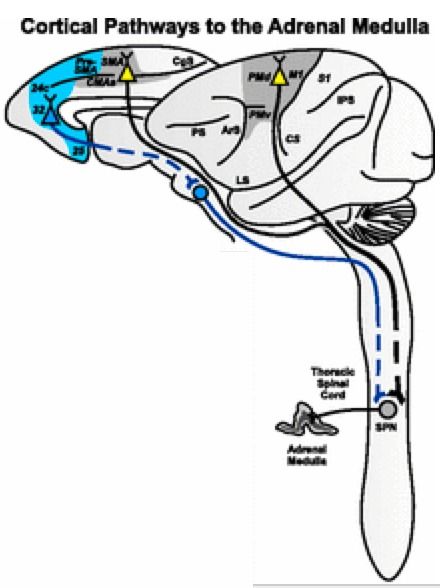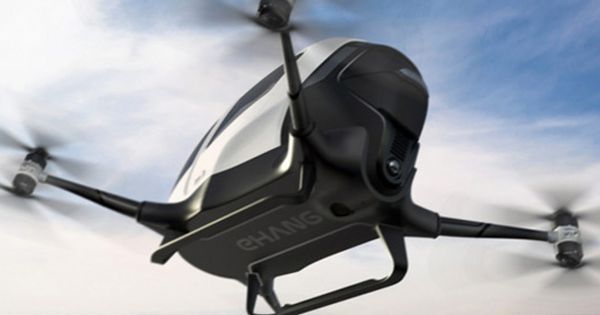Archive for the ‘robotics/AI’ category: Page 2235
Aug 23, 2016
Long-Term, Intensive Robot-Assisted Therapy Helps Paraplegic Patients Walk Again
Posted by Karen Hurst in categories: biotech/medical, business, internet, neuroscience, robotics/AI
NORWELL, Mass.—(BUSINESS WIRE)— Last week, Nature Publishing Group sent the scientific areas of the Internet into a frenzy by publishing a groundbreaking study that proves the positive effects of long-term training with Brain Machine Interfaces (BMI) on patients who have suffered a spinal cord injury (SCI).
The study titled “Long-Term Training with a Brain-Machine Interface-Based Gait Protocol Induces Partial Neurological Recovery in Paraplegic Patients” was conducted by an international group of scientists, led by the Duke University neurobiologist Miguel Nicolelis and demonstrates that it’s never too late to start intensive therapy.
Aug 23, 2016
The End of Meaningless Jobs Will Unleash the World’s Creativity
Posted by Karen Hurst in categories: employment, robotics/AI

And, AI gets a new Spin.
From time to time, the Singularity Hub editorial team unearths a gem from the archives and wants to share it all over again. It’s usually a piece that was popular back then and we think is still relevant now. This is one of those articles. It was originally published April 1, 2015. We hope you enjoy it!
Continue reading “The End of Meaningless Jobs Will Unleash the World’s Creativity” »
Aug 23, 2016
Prepare to Takeoff – 2016’s AUS&R Unmanned Systems and Robotics Convention
Posted by Karen Hurst in categories: drones, robotics/AI
Anyone, planning to attend this November? It looks like the who’s who in Drones and Robotics.
The post is also available in: Hebrew :הכתבה זמינה גם ב
The Unmanned Systems and Robotics AUS&R 2016 international convention has been attracting the attention of world’s leading states and defense industries, including the US, India, Germany, DARPA governmental agency and many others, which had already registered to participate.
Continue reading “Prepare to Takeoff – 2016’s AUS&R Unmanned Systems and Robotics Convention” »
Aug 23, 2016
The Internet of Things and the city of tomorrow
Posted by Blair Erickson in categories: internet, robotics/AI, transportation
First, there is sharing. Self-driving vehicles promise to have a dramatic impact on urban life, because they will blur the distinction between private and public modes of transportation. “Your” car could give you a lift to work in the morning and then, rather than sitting idle in a parking lot, give a lift to someone else in your family – or, for that matter, to anyone else in your neighborhood, social-media community, or city. Some recent papers by MIT show that today’s mobility demand of a city like Singapore could be satisfied by just one-fifth of the number of cars currently in use. Such reductions in car numbers would dramatically lower the cost of our mobility infrastructure and the embodied energy associated with building and maintaining it. Fewer cars may also mean shorter travel times, less congestion, and a smaller environmental impact.
–A second change is parking. Parking infrastructure is so pervasive that in the United States it covers around 5,000 square miles, an area larger than Puerto Rico. Increased sharing of vehicles, as outlined above, would dramatically lower the need for parking spaces. Over time, vast areas of valuable urban land currently occupied by parking spaces could be reinvented for a whole new spectrum of social functions. Creative uses are already promoted across the world during Parking Day, a worldwide event held on the third Friday of September, where artists, designers and citizens transform metered parking spots into temporary public places. The same dynamic re-purposing could happen tomorrow on a much larger scale and with permanent solutions, leading to the reclamation of a large percentage of the urban fabric.
–Finally, urban infrastructure is subject to change. Traffic lights are a 150-years-old technology originally conceived for horse carriages. With the advent of widespread autonomy, slot-based intersections could replace traditional traffic lights, significantly reducing queues and delays. This idea is based on a scenario where sensor-laden vehicles pass through intersections by communicating and remaining at a safe distance from each other, rather than grinding to a halt at traffic lights. Vehicle speed could be controlled so that each vehicle reaches the intersection in synch with the assigned slot – so that stop and go is avoided. The latter, in turn, would reduce emission of pollutants and greenhouse gases caused by the acceleration and deceleration cycles.
Aug 23, 2016
Neuroscientists identify cortical links to adrenal medulla (mind-body connection)
Posted by Sean Brazell in categories: biotech/medical, neuroscience, robotics/AI

Neuroscientists at the University of Pittsburgh have identified the neural networks that connect the cerebral cortex to the adrenal medulla — the inner part of the adrenal gland, located above each kidney, which is responsible for the body’s rapid response in stressful situations.
These findings, reported in the online Early Edition of the journal Proceedings of the National Academy of Sciences PNAS), provide evidence for the neural basis of a mind-body connection. They also shed new light on how stress, depression, and other mental states can alter organ function, and show that there is a real anatomical basis for psychosomatic illness.
Aug 23, 2016
Look Up! 2017 is Going to be the Year of the Autonomous Flying Taxi
Posted by Shailesh Prasad in categories: robotics/AI, transportation
Aircraft manufacturing company Airbus is looking to the skies for a solution to the growing traffic problem. They intend to send out a prototype for their self-flying taxi by next year.
For those of us who live in crowded cities, rush hour traffic is a daily struggle we aren’t likely to get used to. The past few years have seen an ever-lengthening travel time in different cities all over the world.
Nobody is immune, not even the most innovative minds of the world. Aircraft manufacturing company Airbus notes the irony that techies in Silicon Valley come up with all sorts of innovation every day, yet none of them has solved one of their own biggest problems: traffic congestion. “Silicon Valley may pride itself on speed, but during rush hour, everything around the IT Mecca grinds to a halt,” they wrote on their website. “The situation is even worse in cities such as Mumbai, Manila, or Tokyo,” they added. In the Philippines, an estimate says PHP 2.5 billion ($57 million) of potential income is lost to traffic every day, and will rise to P6 billion daily by 2030. In the US, this loss is estimated at $160 billion a year.
Continue reading “Look Up! 2017 is Going to be the Year of the Autonomous Flying Taxi” »
Aug 22, 2016
Iraq Is Preparing an Armed Robot to Fight ISIS
Posted by Dan Kummer in categories: business, robotics/AI
Alrobot would not be the first robot to hit the sands of Baghdad, but it might become the first to actually fire a weapon.
Back in 2007, the U.S. Army deployed three armed ground robots called the Special Weapons Observation Reconnaissance Detection System, or SWORDS, from weapons maker Foster-Miller (now owned by Qinetiq). SWORDS basically consisted of a Foster-Miller TALON robot armed with a machine gun. But the SWORDS were pulled off the battlefield before they were able to take a single shot.
Kevin Fahey, the Army’s program executive officer for ground forces, explained why the following year at a RoboBusiness Conference in Pittsburgh: “The gun started moving when it was not intended to move.”
Continue reading “Iraq Is Preparing an Armed Robot to Fight ISIS” »
Aug 22, 2016
China’s Race to Space Domination: To Try to Gain an Edge Here on Earth, China is Pushing Ahead in Space
Posted by Karen Hurst in categories: energy, engineering, quantum physics, robotics/AI, space
More on China’s race on Space. Last Tuesday, China launched the 1st Quantum Satellite. In 2017, China is planning to be the dominant force in mining of Space. First stop — mining the dark side of the moon. Given China’s own history with environmental pollution plus mining’s damaging effects to the environment when not properly managed; etc. one must ponder how will space and Earth itself be impacted by such mining.
Before this decade is out, humanity will go where it’s never gone before: the far side of the moon. This dark side — forever facing away from us — has long been a mystery. No human-made object has ever touched its surface. The mission will be a marvel of engineering. It will involve a rocket that weighs hundreds of tons (traveling almost 250,000 miles), a robot lander, and an unmanned lunar rover that will use sensors, cameras, and an infrared spectrometer to uncover billion-year-old secrets from the soil. The mission also might scout the moon’s supply of helium-3 — a promising material for fusion energy. And the nation planting its starry flag on this historic trip will be the People’s Republic of China.

Aug 22, 2016
A lost spacecraft is talking to NASA again after nearly 2 years in the void
Posted by Karen Hurst in categories: robotics/AI, space travel
Wild stuff.
Somewhere on the other side of the sun, almost directly opposite to Earth, a NASA spacecraft has drifted aimlessly through the void since Oct. 1, 2014, unable to establish contact with our planet.
At least that was the depressing situation until Sunday night.
Continue reading “A lost spacecraft is talking to NASA again after nearly 2 years in the void” »














